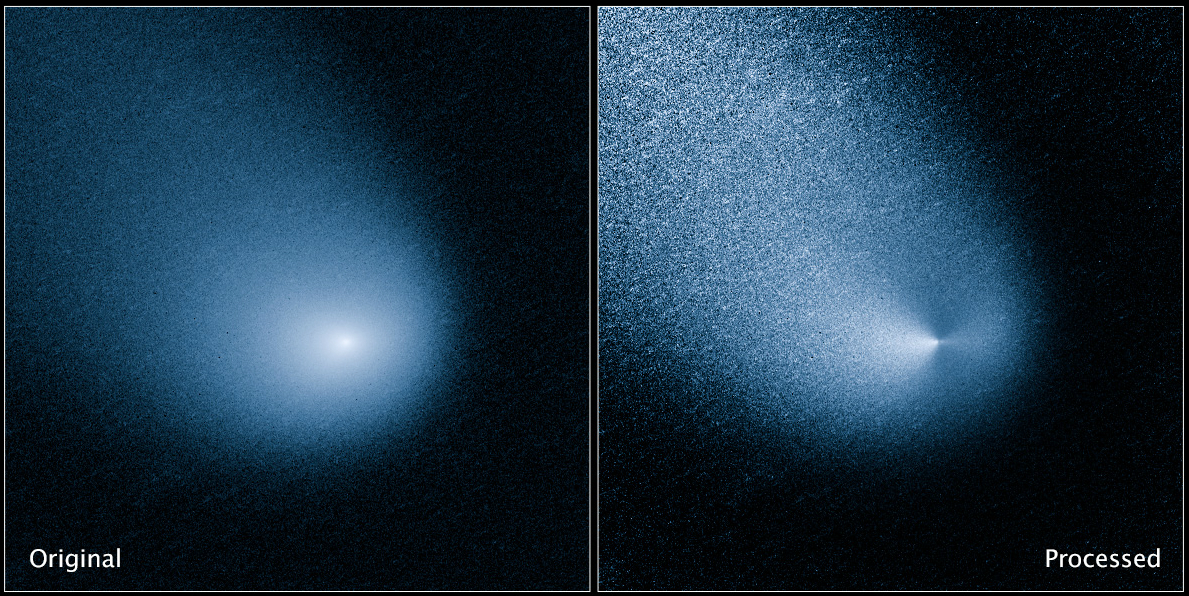TORONTO – On October 19, a comet will make a very close fly-by of Mars. Understanding how the red planet will be affected is something scientists are studying, and a recent Hubble image is shedding some light on what could happen.

On Thursday, NASA released an image of comet C/2013 A1, known as Siding Spring, at a distance of 568 million kilometres. Siding Spring’s nucleus, or core, remains hidden beneath the dust cloud, called a coma, that surrounds it.
READ MORE: European Space Agency sets tentative date for 1st comet landing Nov. 2014
Using processing techniques, NASA scientists were able to remove the glow of the coma, revealing two jets of dust that are coming out in opposite directions.
This observation will allow astronomers to figure out just how much these dust grains will impact Mars. Not only that, but there are several spacecraft in orbit around the planet, and it is important that scientists determine if and how they will be affected.
READ MORE: R.I.P., Comet ISON
Siding Spring was discovered in January 2013 by renowned comet-hunter Robert McNaught at the Siding Spring Observatory in Australia. The comet has a one-million year orbit around the sun and will make its closest approach on October 25, at a distance of 209 million kilometres.
It is unlikely that the comet will become bright enough to spot with the naked eye.


Comments